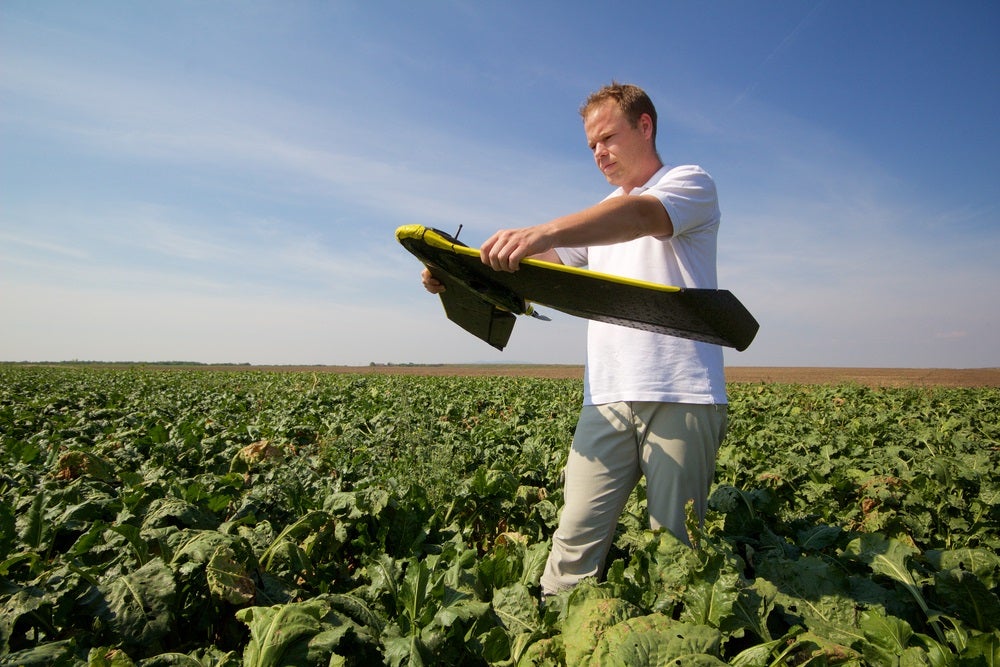Precision agriculture: a likely answer to Climate Change and Food Security. Is it accessible for everyone?
How can agriculture respond simultaneously to the three enormous challenges facing humanity—food security, depleting natural resources, and climate change? Precision agriculture is a promising approach. However, is it accessible to all types of farmers?
Precision agriculture has been defined in many ways. Some authors define it in terms of the technology used, as in “[Precision agriculture] is a whole-farm management approach using information technology, satellite positioning (GNSS) data, remote sensing and proximal data gathering. These technologies have the goal of optimizing returns on inputs whilst potentially reducing environmental impacts.” Other definitions are based on the benefits that Precision agriculture may bring about: “Precision farming implies a management strategy to increase productivity and economic returns with a reduced impact on the environment. It is based on the application of information technology to a description of variability in the field, variable-rate operations and the decision-making system.” From an economic perspective, Precision agriculture could be defined simply as efficient agricultural production, or the accurate use of inputs in time and space to maximize production and minimize waste. It is “a way to apply the right treatment in the right place at the right time.”
As these definitions suggest, Precision agriculture can entail several advantages to the producer and the entire economy:
- Yield increases. A study from 2012, for instance, found that “it would be possible to close global yield gaps on major cereals to within 79% of attainable yields [a 29% global production increase] with fairly minimal changes to total worldwide nitrogen and phosphate use by coupling targeted intensification with efforts to reduce nutrient imbalances and inefficiencies.”
- Higher yields mean more food—increased food security—and, most likely, higher profits to the farmer.
- Environmental benefits:
- Higher yields imply the possibility of increasing production with less water and without expanding the agricultural area, which means less deforestation and depletion of natural resources.
- A reduction in the amount of fertilizer and other agrochemicals may have enormous benefits in terms of reductions of greenhouse gas emissions and less contamination of soil and water bodies due to runoff from the fields.
- Agricultural health. If frequent crop monitoring is implemented—for instance through drones and other remote sensing techniques—the incidence of plagues and diseases can be more promptly controlled, making it easier to contain epidemics.
As always, there’s no free lunch. Precision agriculture typically involves the use of state-of-the-art machinery—some large farms, for instance, use self-driven tractors that plant seeds or apply agrochemicals with a precision of less than 2cm and that are being monitored in real time via satellite. It also requires collecting large volumes of information across time and space, and analyzing it to determine what actions to take to maximize yields in every part of the field. Consequently, adopting Precision agriculture can be costly and difficult:
- The associated machinery and equipment are expensive—although their prices continue to go down.
- Operating and providing maintenance to them requires specialized skills.
- Interpreting the information from the field and other sources is a complex and time-consuming task that may require hiring the services of a specialized firm.
- Markets of inputs, machinery, spare parts, and skilled labor need to function efficiently to allow Precision agriculture to work and be profitable.
Precision agriculture is therefore more easily adopted by large farms, which tend to have better access to markets and for which these costs—some of them fixed—are smaller than the potential gains from large-scale production.
Does this imply that small—and even medium—farmers cannot adopt Precision agriculture? Are they bound to inefficient agricultural practices that result in lower yields, lower profits, and large negative impacts for the environment? There are reasons to think that this may not be the case.
First, technological progress is reducing the cost and size of Precision agriculture machinery and soon they could be readily available for small farmers.
Second, medium and small farmers may be able to benefit from the technology that is readily available. They could overcome their scale limitations by efficiently sharing the use of machinery. For example, three recently created firms—Hello Tractor, in Nigeria; Trringo, in India; and La Rotonda, in Argentina— connect producers with providers of agricultural services—e.g., tractor owners—using internet-based platforms like the one used by Uber to connect drivers with passengers. Coordination systems of this type not only have the potential of allowing full utilization of the machinery, they also reduce substantially the barrier posed by the difficulty of operating it as only tractor owners need to know how to do it. An additional benefit could come from greater gender equality, as tractor owners could be of either gender and producers could not discriminate against women when requesting the service. Over time, prejudices would be eliminated by customer satisfaction.
As promising as this may be, it is still far from clear whether Precision agriculture can be successfully adopted by medium and small farmers, at least in the near future. There needs to be a careful exploration of the technological solutions that would be most suitable for them—and for the Latin American and Caribbean context.
Precision agriculture may be a good way to tackle the challenges of food security, depleting natural resources, and climate change, but a lot of effort has to be put to make sure that medium and small farmers are not left behind.


It’s great that precision agriculture can increase production while also using less water. My friend owns a fairly large farm and is looking to increase the efficiency of it. I will recommend he looks into a suredrive system.